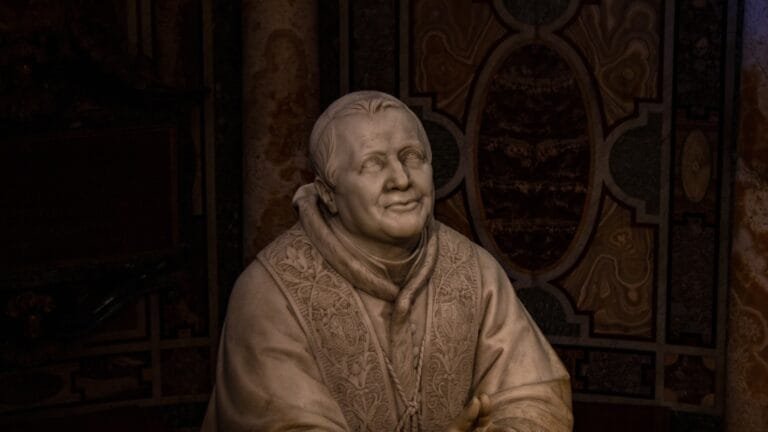FAYETTEVILLE — Though coffins can have a macabre connotation in the U.S., they can help celebrate the life’s work of the deceased in Ghana, according to internationally renowned artist Jacob Paa Joe Jr.
Prior to 1950, the dead were buried in simple, traditional coffins. But during the past seven decades, a new tradition has taken hold in his African country, with family members requesting coffins that represent what their deceased relatives devoted their lives to, Paa Joe Jr. said Thursday during an artist talk on the campus of the University of Arkansas, Fayetteville, where he’s been leading a workshop this month.
These coffins “allow the deceased to continue doing in the afterlife” what they did on earth, he said.
At the School of Art, Paa Joe Jr. has been working on a coffin inspired by the Sankofa bird, representing an important principle of the Akan — a Kwa group living primarily in southern Ghana and in parts of the Ivory Coast and Togo. The mythical bird looks back while moving forward, said Kayla Crenshaw, director of administration and communications for the School of Art.
Paa Joe Jr. apprenticed with his father, legendary coffin artist Paa Joe, and co-manages Paa Joe Coffin Works in the Greater Accra region of Ghana as a master artist.
On Thursday, the final version of the Sankofa bird coffin was unveiled with a procession. He then spoke about his work and process.
Janine A. Sytsma, assistant professor of Art History in the School of Art, requested the coffin because the proverb of the Sankofa bird is meaningful and resonant, she said. It was also a popular motif during an era when many West African countries gained their independence from colonial powers.
It’s been “a real treat to host [him] and attend sessions, [where he’s] enriched our understanding, and we all have a new appreciation for this tradition,” Sytsma added. “I’ve been so inspired by how [he’s] reinvigorated and reimagined” this discipline.
A person who worked in the fishing industry may be buried in a coffin shaped like a boat or fish, while a farmer may be buried in a coffin that depicts a field and crops, for example. In addition to coffins for burial, Paa Joe Coffin Works also creates coffins for collectors and exhibitions.
In the 1970s, a California art dealer came to Ghana, saw the coffins, and became the first collector, Paa Joe Jr. said. The first exhibition — in Paris in 1989 — led to more collectors and exhibitions.
There’s “nothing at all we can’t do,” he said. Though he didn’t plan to follow his father into the business — he considered becoming a pastor and a construction manager — he changed his mind in 2008, and he feels he’s carrying on his family’s legacy as the eldest son.
In fact, this residency in Arkansas was his first such workshop without his father — who is in ill health — but he’s proud to “demonstrate what he has taught me,” he said. His father is proud, too, even bestowing upon him a name that means “God’s gift” in their language.
Paa Joe Jr. is building an academy for artists in Ghana that he hopes will become “a space that enhances the community and a tourist attraction,” he said. He also wants to create a place in the U.S. to build these coffins, as America is the top purchaser of them.
His next exhibition will be in New York City and feature coffins that highlight the iconography of the city and country, from a New York City taxi cab, a big apple and the Statue of Liberty, to a hot dog and a ketchup bottle, he said. Americans “love ketchup with their fries.”
While some of his countrymen are nervous around the coffins meant for burial, there’s no “voodoo” to them, he noted. It’s “the same wood used for your bed and furniture, nothing harmful.”
Sytsma and a colleague were able to bring a group of students to his business in Ghana, and she’s grateful to host Paa Joe Jr. this month so he could connect with art students and create the Sankofa bird coffin, she said. Thursday’s procession and artist talk represented “the grand finale” of his time in Fayetteville.













